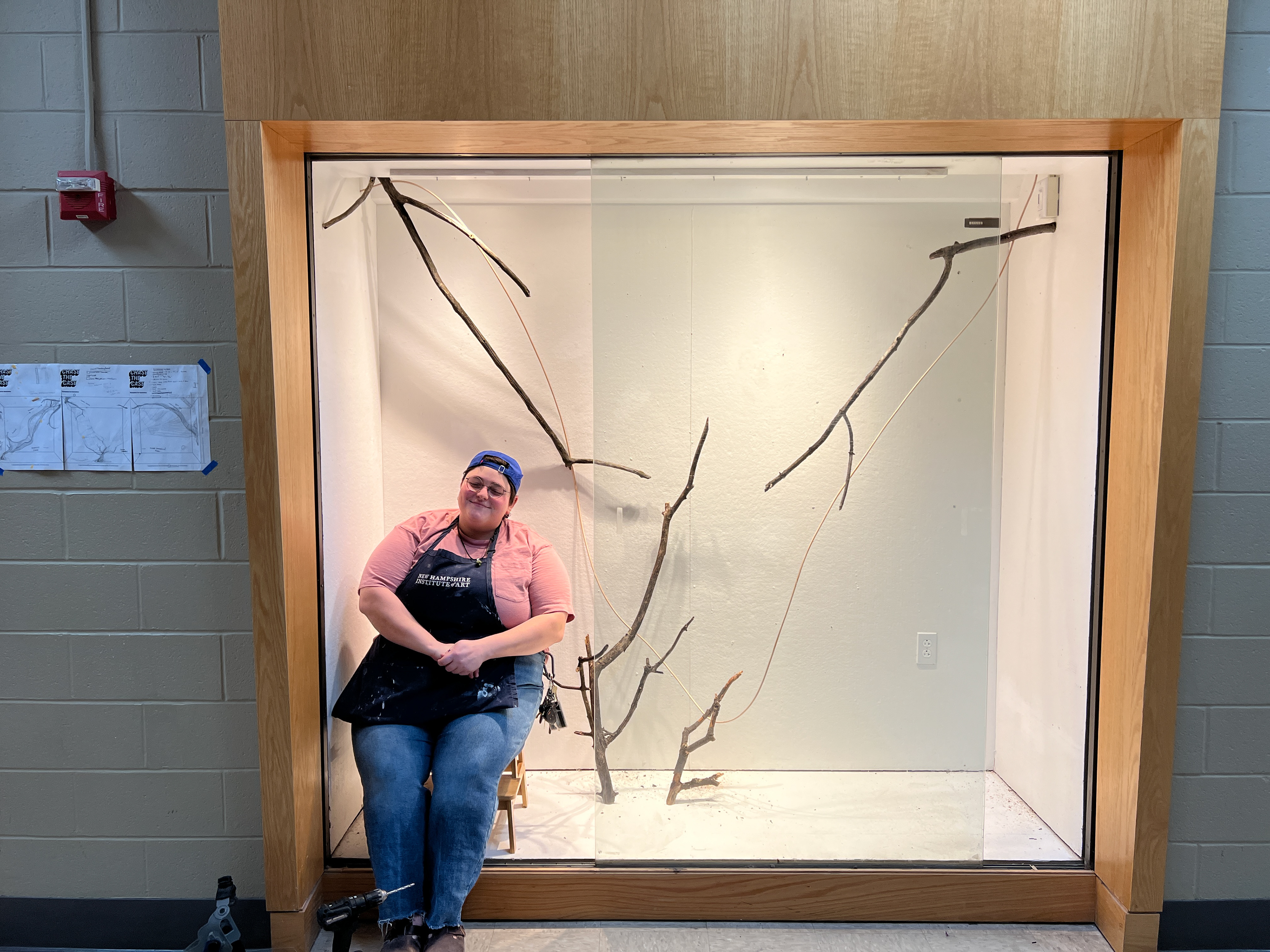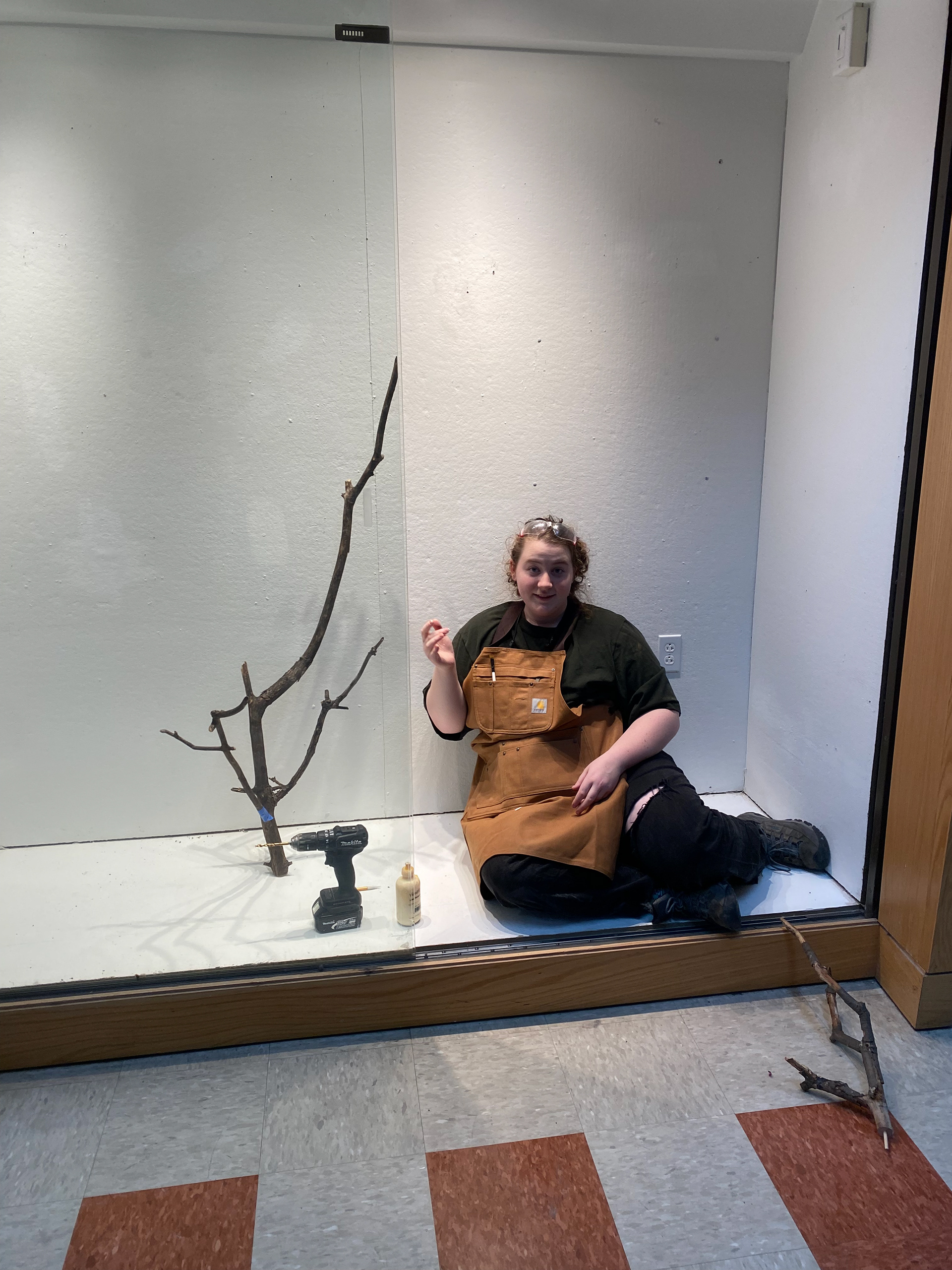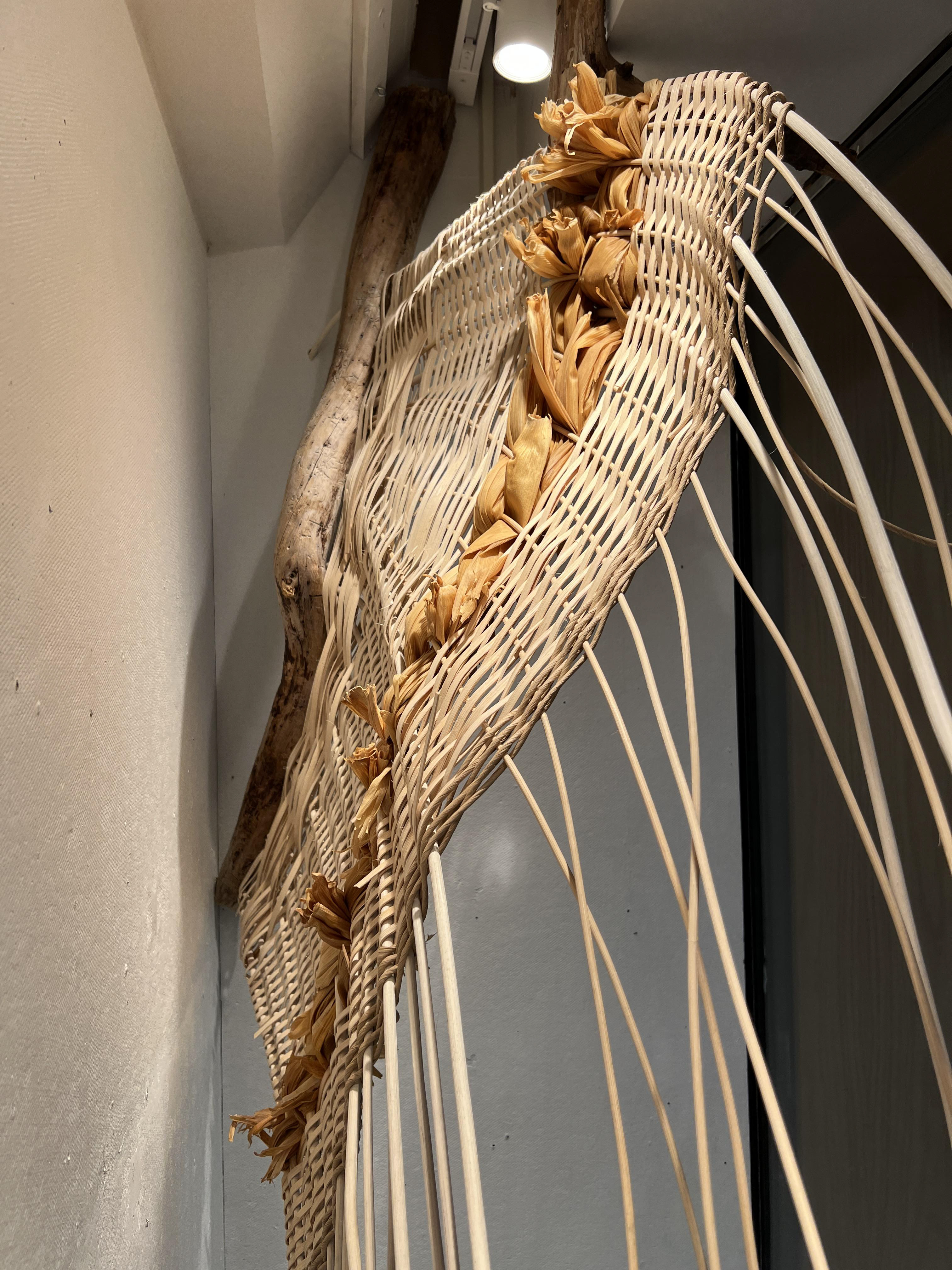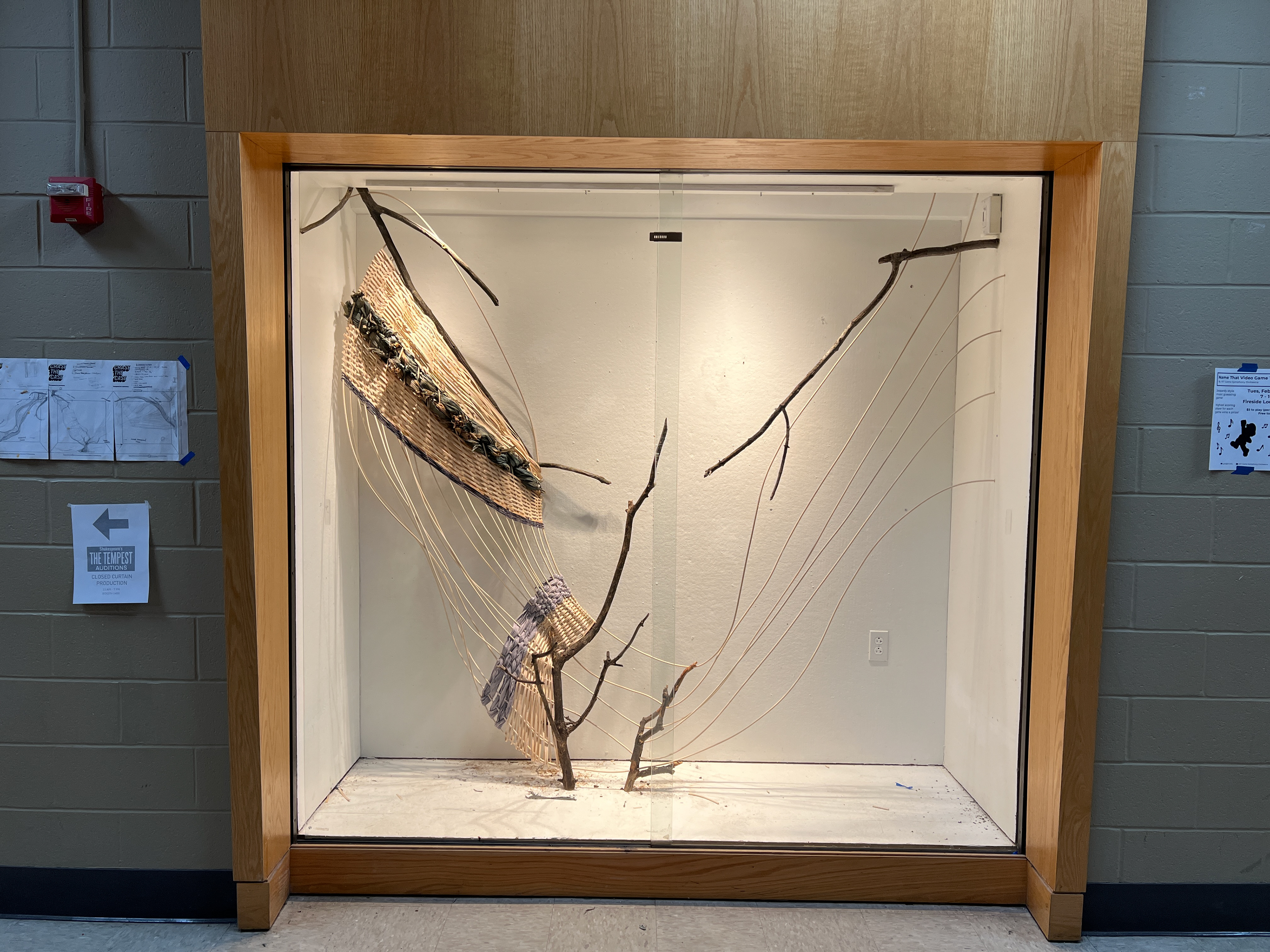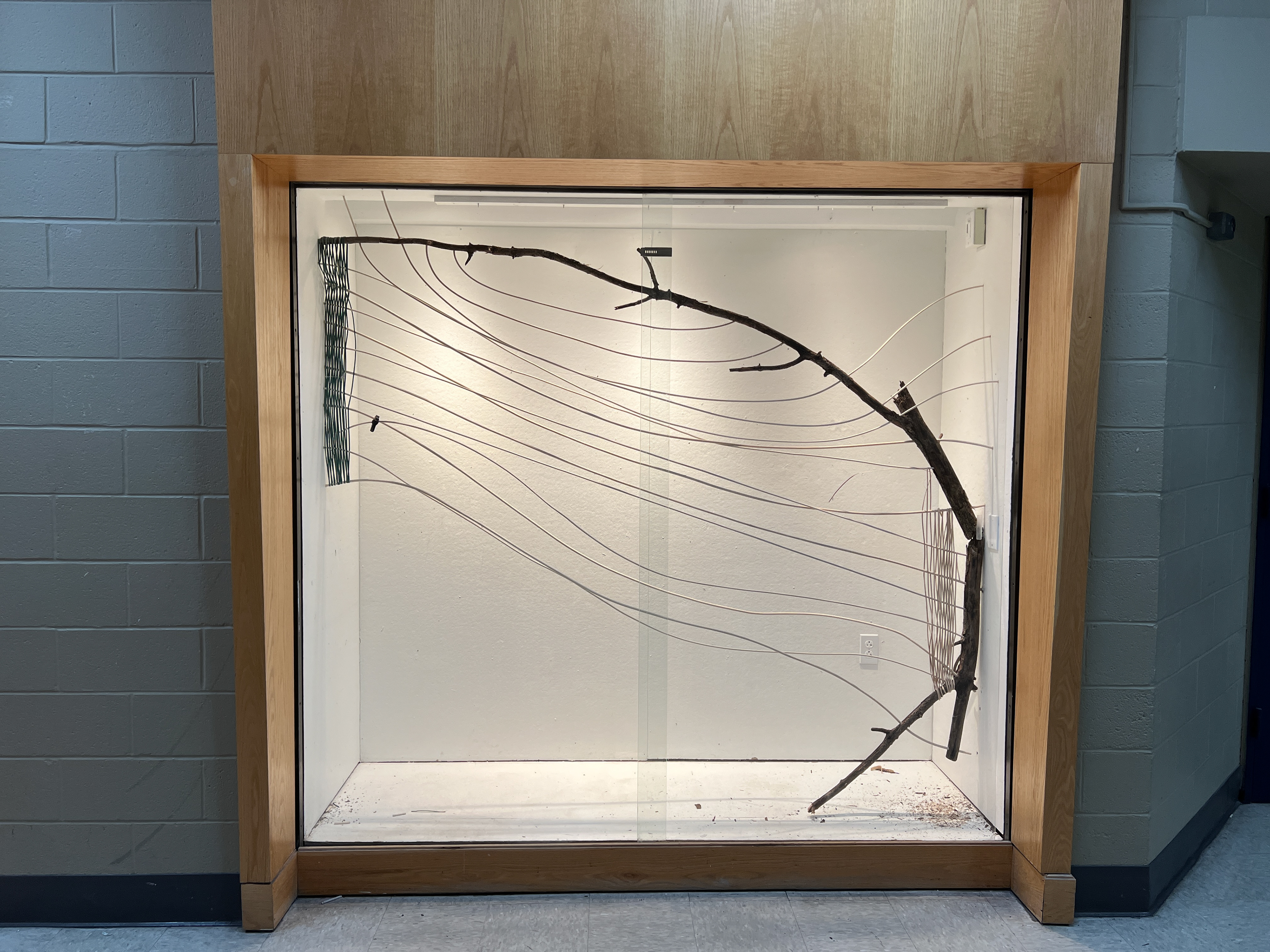Installed in the Webb Auditorium Cases at Rochester Institute of Technology


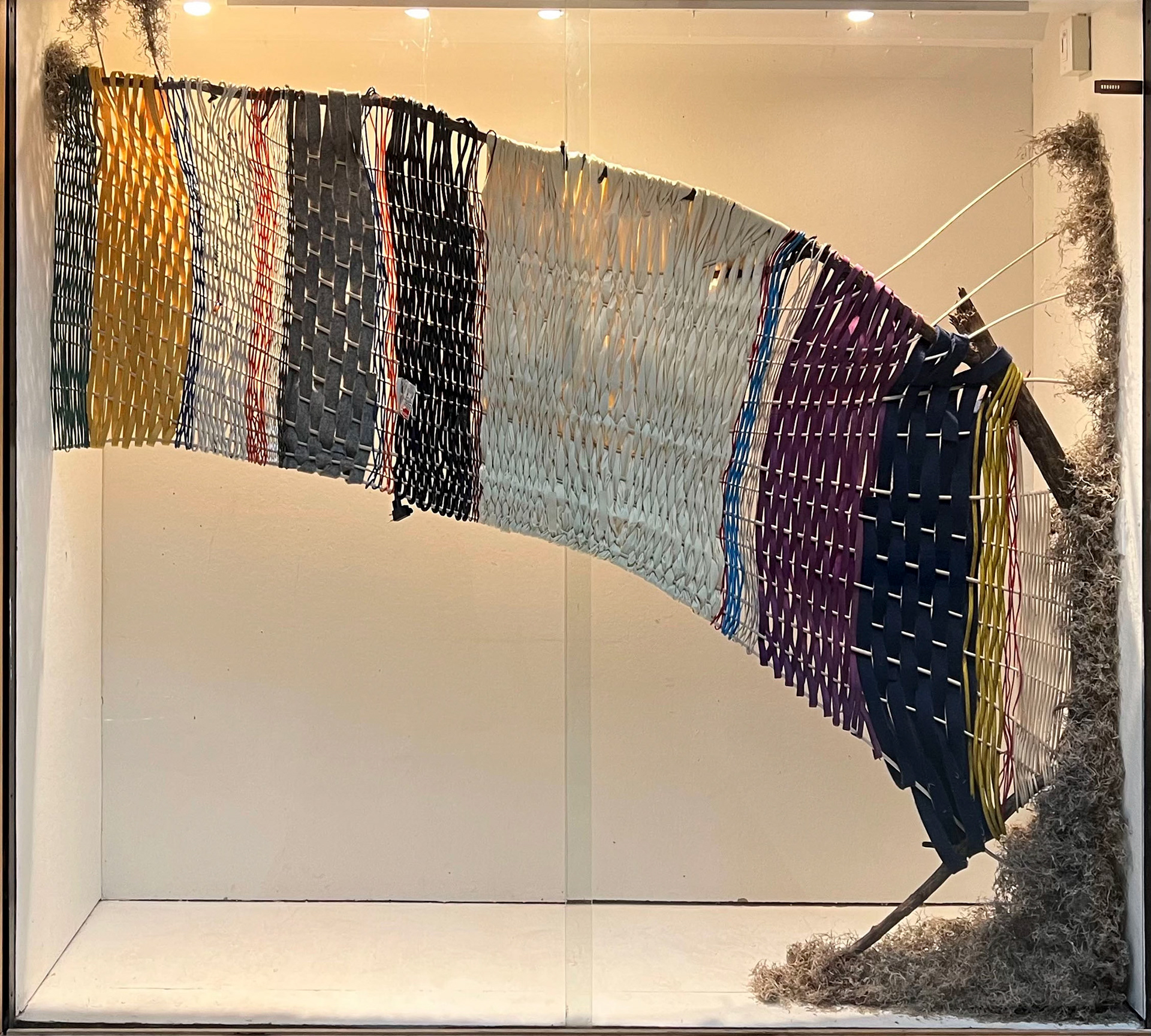
Dimensions: Individual Cases are each 60" H x 87" W x 27" D
_____________________________________________________________
As young women working in the field of visual art, we are constantly bombarded with male artists, designers, and educators. In the male-dominated fields of furniture design and ceramics, it is hard to carve out a space for ourselves to work within as interdisciplinary artists. As we both continue to further our art education with our MFA degrees here at RIT, we experienced this disparity firsthand – it is hard to find female mentors in our fields, as well as find our place in our field's history. Women have traditionally been pushed toward the textile and fiber crafts without their wants or desires in mind. It became a default just like the stay-at-home mother or housewife trope. In addition, museum collections are disproportionately filled with male work over female work. The work of The Guerrilla Girls brought to focus the inequality between male and female artists in museum collections along with pay discrepancies. Museums would rather have a nude painting of a woman than the work of a female artist in their collection (Guerrilla Girls).
Meagan has been weaving since she was a child. Her mother is a self-taught basket weaver and artist who instilled craft and design in Meagan at a young age. Weaving became a fun, meditative, creative outlet for Meagan to explore color, texture, and form. With her mother, Meagan and her siblings would gather corn husks, driftwood, and other natural fibers to use in the baskets, as well as dove into color by dying their own materials. From baskets, Meagan has explored dynamic sculptural forms with reed, fibers, and industrial materials to contrast the traditional and functional nature of weaving.
Meagan has carried on and passed this weaving tradition to Talia within this last year. Talia has quickly become infatuated with the way reeds and fibers move and create soft and organic sculptures. She has begun to mix her knowledge of weaving into her furniture and sculpture practice, incorporating it into lamps, sculptures, and other artifacts. Weaving and its natural materials speak to Talia’s inclination toward nature: using found and gathered objects within her pieces.
Meagan and Talia are coming together to create this piece not just because of their friendship, but because of the desire to pay homage to the traditions of communal art-making. Historically, textiles and fiber arts were made with multi-person teams on looms. Today people have knitting, quilting, and weaving groups to pass on this tradition and build community. This piece marries/joins/brings together a shared interest in nature, passion for weaving, and expertise in sculpture.
